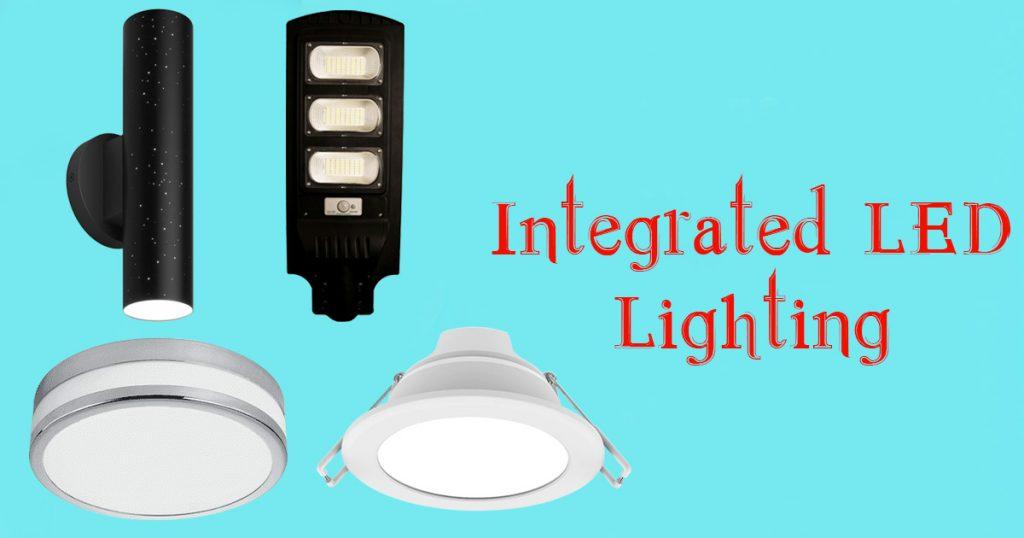Lighting fixtures play a vital role in our homes. Traditionally, their primary purpose was to provide light, making our homes comfortable and functional even after the sun had set. Over time, however, lighting has evolved beyond this basic function. Modern lighting solutions not only illuminate our spaces but also enhance aesthetics, improve energy efficiency, and contribute to a healthier environment. One such innovation that has revolutionized home lighting is LED lighting.
LEDs or Light Emitting Diodes were first invented in the early 1960s by Nick Holonyak Jr., an engineer at General Electric. Initially used mainly in electronic devices, LEDs have since found their way into homes across the globe, thanks to their energy efficiency, longevity, and versatility. The latest development in this technology is integrated LED lighting, which combines the benefits of LED technology with modern design and functionality.
Understanding Integrated LED Lighting
Integrated LED Lighting is a type of lighting fixture where the light source or bulb is not separate but built into the fixture itself. The term “integrated” refers to this design aspect, which differs from traditional lighting options like incandescent, halogen, or fluorescent bulbs that require separate bulbs.
The primary features of integrated LED lighting include its compact size, long lifespan, and energy efficiency. These lights are intended to last for thousands of hours, reducing the need for frequent bulb replacements. Furthermore, they use less energy than standard bulbs, making them a cost-effective and environmentally friendly option for homeowners.
Pros of Integrated LED Lighting
Energy Efficiency
When compared to traditional lighting solutions such as incandescent, halogen, or fluorescent bulbs, integrated LEDs use significantly less energy. This energy efficiency can result in significant savings on your electric bill over time. A 12-watt LED light, for example, can produce the same amount of light as a 60-watt incandescent bulb, resulting in an 80% energy savings.
Long Lifespan
One of the most notable characteristics of integrated LEDs is their long lifespan. These lights have a lifespan of up to 50,000 hours, which equates to more than five years if left on continuously. In a typical household usage scenario, where lights are on for about eight hours a day, this lifespan can extend to over 17 years. This increased longevity reduces the need for frequent bulb replacements, saving time and money.
Design Flexibility
The compact size and versatility of LEDs open up a world of design possibilities. They can be seamlessly integrated into a variety of fixtures and settings, from sleek and modern pendant lights to intricate, artistic installations. This adaptability enables homeowners and designers to create one-of-a-kind lighting solutions that improve the aesthetics of any space.
Less Heat Production
Traditional incandescent bulbs waste a significant amount of energy as heat. In contrast, LEDs are much more efficient at converting energy into light, resulting in less heat production. This makes them safer to use, especially in enclosed spaces or close to materials that can be damaged by heat.
Environmentally Friendly
Integrated LED lights are more eco-friendly than traditional light bulbs. They do not contain hazardous substances such as mercury, which is present in compact fluorescent lamps (CFLs). Furthermore, their long lifespan means less waste from frequent bulb replacements.
Better Light Quality
LEDs produce higher-quality light than traditional lighting options. They come in a variety of color temperatures ranging from warm to cool, allowing you to create the ideal ambiance for your space. Furthermore, LEDs emit light in only one direction, eliminating the need for reflectors and diffusers that can trap light.
Cons of Integrated LED Lighting
Higher Initial Cost
While integrated LED fixtures offer numerous benefits, they also come with a higher initial cost compared to traditional lighting options. However, the long-term savings from reduced energy consumption and fewer bulb replacements must be considered. Over time, the total cost of ownership for integrated LED lights can be lower than other lighting solutions.
Limited Repair Options
If an integrated LED light fails, the entire fixture often needs to be replaced since the LED elements are built into the fixture itself. When compared to fixtures with replaceable bulbs, this may result in higher maintenance costs.
Color Variance
LEDs come in a variety of color temperatures, ranging from warm white to cool white. However, even within the same color temperature range, there can be minor color differences between LEDs. While this is less noticeable in general lighting applications, it might be more apparent in settings where color consistency is crucial, such as in display or task lighting.
Sensitive to Temperature
While LEDs are known for producing less heat, they are also sensitive to high temperatures. If an LED fixture isn’t properly cooled, it can lead to premature failure or reduced light output.
Dimming Compatibility Issues
Not all integrated LED lights work with all dimmer switches. Some may flicker or buzz when dimmed, or they may not dim as smoothly as incandescent bulbs.
Is Integrated LED Lighting a Worthy Investment?
The question of whether integrated LED lighting is worth it or not depends on various factors such as your budget, lighting needs, and long-term energy goals. With the information gathered, it’s clear that integrated LED light fixtures offer numerous benefits that make them a worthwhile investment for many homeowners. However, it is also necessary to consider the potential drawbacks.
In conclusion, integrated LED lighting represents a significant advancement in home lighting technology. Despite the potential drawbacks, the benefits of energy efficiency, longevity, and design flexibility make them a compelling choice for many homeowners. As with any investment, it’s crucial to consider your specific needs and circumstances before deciding if integrated LED lighting is worth it for you.
